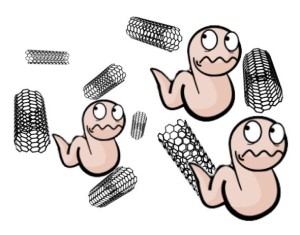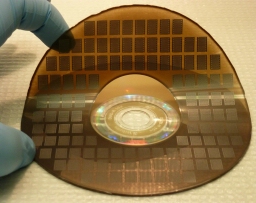Graphite
Simon Fraser University (SFU) announced a partnership with Ontario’s Sheridan College and three Canadian companies (Terrella Energy Systems, Alpha Technologies, and Westport Innovations) in a research project investigating low-cost graphite thermal management products. From an April 9, 2015 SFU news release,
Simon Fraser University is partnering with Ontario’s Sheridan College, and a trio of Canadian companies, on research aimed at helping the companies to gain market advantage from improvements on low-cost graphite thermal management products.
Graphite is an advanced engineering material with key properties that have potential applications in green energy systems, automotive components and heating ventilating air conditioning systems.
The project combines expertise from SFU’s Laboratory for Alternative Energy Conversion with Sheridan’s Centre for Advanced Manufacturing and Design Technologies.
With $700,000 in funding from the Natural Sciences and Engineering Research Council’s (NSERC) College and Community Innovation program, the research will help accelerate the development and commercialization of this promising technology, says project lead Majid Bahrami, an associate professor in SFU’s School of Mechatronics Systems Engineering (MSE) at SFU’s Surrey campus.
The proposed graphite products take aim at a strategic $40 billion/year thermal management products market, Bahrami notes.
Inspired by the needs of the companies, Bahrami says the project has strong potential for generating intellectual property, leading to advanced manufacturing processes as well as new, efficient graphite thermal products.
The companies involved include:
Terrella Energy Systems, which recently developed a roll-embossing process that allows high-volume, cost-effective manufacturing of micro-patterned, coated and flexible graphite sheets;
Alpha Technologies, a leading telecom/electronics manufacturer, which is in the process of developing next-generation ‘green’ cooling solutions for their telecom/electronics systems;
Westport Innovations, which is interested in integrating graphite heat exchangers in their natural gas fuel systems, such as heat exchangers for heavy-duty trucks.
Bahrami, who holds a Canada Research Chair in Alternative Energy Conversion Systems, expects the project will also lead to significant training and future business and employment opportunities in the manufacturing and energy industry, as well as the natural resource sector and their supply chain.
“This project leverages previous federal government investment into world-class testing equipment, and SFU’s strong industrial relationships and entrepreneurial culture, to realize collective benefits for students, researchers, and companies,” says Joy Johnson, SFU’s VP Research. “By working together and pooling resources, SFU and its partners will continue to generate novel green technologies and energy conversion solutions.”
Fast Facts:
- The goal of the NSERC College and Community Innovation program is to increase innovation at the community and/or regional level by enabling Canadian colleges to increase their capacity to work with local companies, particularly small and medium-sized enterprises (SMEs).
- Canada is the fifth largest exporter of raw graphite.
- …
I have mentioned graphite here before. Generally, it’s in relation to graphite mining deposits in Ontario and Québec, which seem to have been of great interest as a source for graphene production. A Feb. 20, 2015 posting was the the latest of those mentions and, coincidentally, it features NanoXplore and graphene, the other topic noted in the head for this posting.
Graphene and NanoXplore
An April 17, 2015 news item on Azonano makes a production announcement,
Group NanoXplore Inc., a Montreal-based company specialising in the production and application of graphene and its derivative materials, announced today that it is producing Graphene Oxide in industrial quantities. The Graphene Oxide is being produced in the same 3 metric tonne per year facility used to manufacture NanoXplore’s standard graphene grades and derivative products such as a unique graphite-graphene composite suitable for anodes in Li-ion batteries.
An April 16, 2015 NanoXplore news release on MarketWired, which originated the news item, describes graphene oxide and its various uses,
Graphene Oxide (GO) is similar to graphene but with significant amounts of oxygen introduced into the graphene structure. GO, unlike graphene, can be readily mixed in water which has led people to use GO in thin films, water-based paints and inks, and biomedical applications. GO is relatively simple to synthesise on a lab scale using a modified Hummers’ method, but scale-up to industrial production is quite challenging and dangerous. This is because the Hummers’ method uses strong oxidizing agents in a highly exothermic reaction which produces toxic and explosive gas. NanoXplore has developed a completely new and different approach to producing GO based upon its proprietary graphene production platform. This novel production process is completely safe and environmentally friendly and produces GO in volumes ranging from kilogram to tonne quantities.
“NanoXplore’s ability to produce industrially useful quantities of Graphene Oxide in a safe and scalable manner is a game changer, said Dr. Soroush Nazarpour, President and CEO of NanoXplore. “Mixing graphene with standard industrially materials is the key to bringing it to industrial markets. Graphene Oxide mixes extremely well with all water based solutions, and we have received repeated customer requests for water soluble graphene over the last two years”.
It sounds exciting but it would be helpful (for someone like me, who’s ignorant about these things) to know the graphene oxide market’s size. This would help me to contextualize the excitement.
You can find out more about NanoXplore here.

